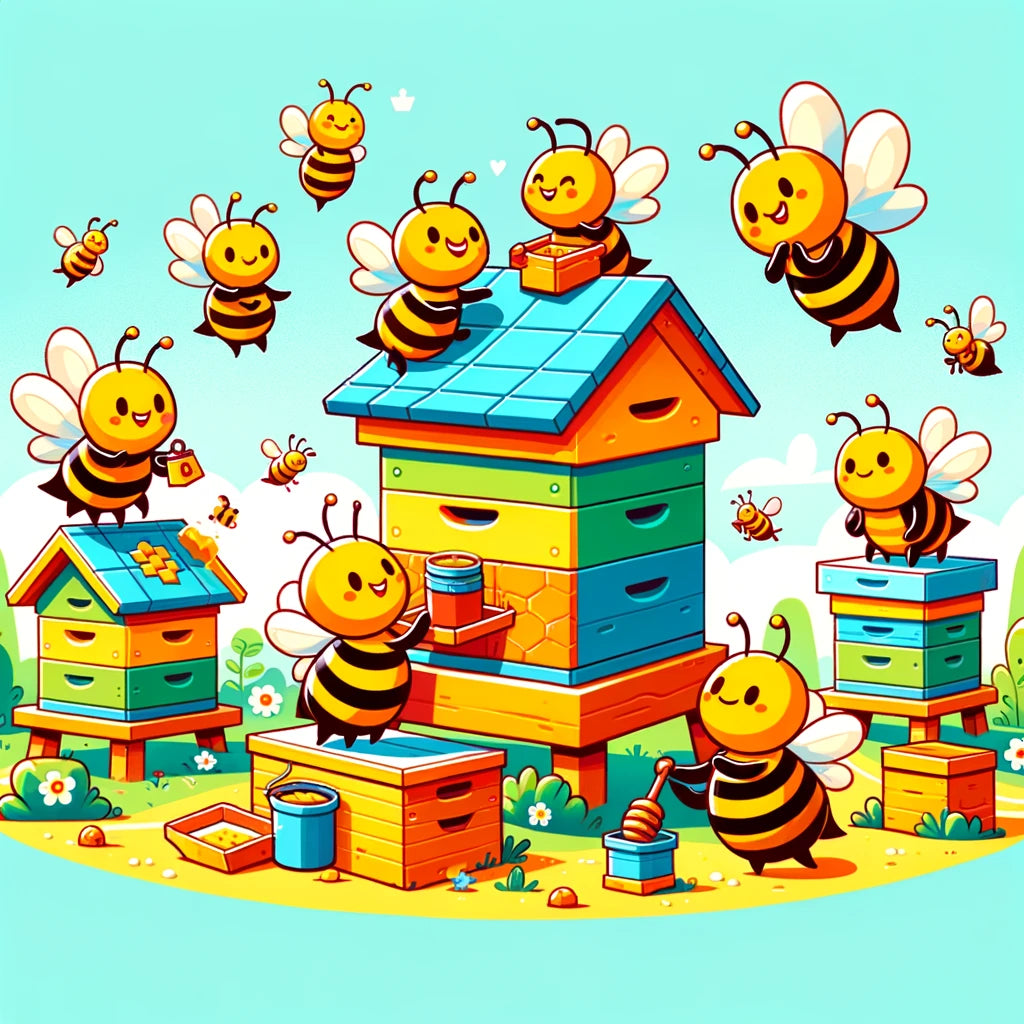
How to Use Quilt Boxes for Bees | Manage Hive Moisture
Winter presents a unique challenge for beekeepers: ensuring the survival of their hives in cold, damp conditions. The key to success lies in managing moisture levels within the hive, a critical aspect often overlooked.
This blog explores the nuanced role of quilt boxes in winter beekeeping, highlighting how this essential tool can make a significant difference in ensuring the vitality of bee colonies during the colder months.
Why Moisture Management Matters
Moisture inside a bee hive isn't just a nuisance; it's a potential death sentence for the colony. As bees metabolize honey to stay warm, they release moisture into the air within the hive. Without proper management, this moisture condenses and falls back onto the bees, chilling and potentially killing them. Thus, controlling hive moisture is as crucial as providing food stores and pest protection.
What is a Quilt Box?
A quilt box is essentially a moisture buffer zone. Situated between the bees and the hive's top cover, it absorbs moisture rising through the hive, keeping the interior environment dry and stable. Typically filled with absorbent materials like pine shavings or straw, the quilt box allows moisture to evaporate away from the bees and provides additional insulation.
How to Build A Quilt Box
Crafting a superior quilt box involves more than just basic assembly; it demands thoughtful consideration of its components and structure. Start constructing a sturdy wooden frame that fits snugly atop your hive, ensuring it's robust enough to withstand the elements.
The choice of breathable fabric for the base is critical—it must permit moisture to escape while preventing bees from entering the quilt box. For the filling, opt for materials like pine shavings or straw, which are known for their excellent absorbent properties. This setup traps moisture and facilitates evaporation, thanks to well-placed ventilation holes.
Moreover, integrating features that allow for easy inspection and maintenance can enhance the functionality of your quilt box, making it a pivotal element in your hive's winter survival strategy. The goal is to balance moisture control and thermal insulation, fostering a conducive environment for your bees during the harsh winter months.
Installation and Maintenance
Installing and maintaining a quilt box above your beehive frames is a proactive measure to ensure your colony thrives through winter. The installation begins as the cold season approaches, positioning the quilt box directly over the hive's upper frames beneath the protective inner cover. This strategic placement leverages the rising warm air within the hive, which carries moisture that the box's absorbent materials then capture.
For maintenance, beekeepers should periodically inspect the quilt box, ideally on mild winter days, to minimize disturbance to the bees. The key is to check if the absorbent materials, like pine shavings or straw, have become damp. Saturated materials must be replaced or dried out to maintain their effectiveness in moisture absorption.
Additionally, this routine check provides an excellent opportunity to assess the bee hive box's health, adjusting ventilation or insulation based on the hive's condition.
Beyond moisture control, the quilt box offers a layer of insulation, contributing to a stable internal temperature within the hive. Ensuring the box is well-maintained and the materials effectively manage moisture is crucial for the colony's survival and health during the colder months. Proper installation and diligent maintenance of the quilt box can lead to a more robust colony, ready to emerge solid and productive come spring.
This holistic approach to hive management underscores the importance of every beekeeper's role in safeguarding their bees against the challenges of winter, promoting a thriving bee community ready for the year ahead.
The Bottom Line
Quilt boxes represent a blend of beekeeping tradition and practical innovation. By maintaining a drier hive environment, they not only enhance the bees' chances of winter survival but also contribute to the overall health of the colony. As beekeepers, adopting such practical and straightforward solutions helps ensure our hives thrive, not just survive, through the winter months.
As we advance in our beekeeping practices, integrating tools like quilt boxes into our hive management routines underscores our commitment to sustainable and successful beekeeping. Let's continue to share knowledge, innovate, and support the well-being of our bee communities, ensuring they emerge from winter ready to flourish in the spring.
General Question About Quilt Boxes for Bees
1. What materials are best for filling a quilt box?
The best materials for filling a quilt box are those that are highly absorbent and provide good insulation, such as pine shavings, straw, or wood chips. These materials effectively trap moisture and facilitate evaporation, keeping the hive dry.
2. How often should I check the quilt box during winter?
It is recommended to check the quilt box periodically, ideally on mild winter days, to minimize disturbance to the bees. Regular inspections help ensure that the absorbent materials have not become saturated and remain effective in moisture absorption.
3. Can I use a quilt box in conjunction with other moisture control methods?
Yes, a quilt box can be used alongside other moisture control methods, such as using a ventilated inner cover or adding a moisture board. Combining different techniques can enhance moisture management and improve the overall health of the hive during winter.
4. Is it necessary to remove the quilt box after winter?
Yes, it is generally recommended to remove the quilt box after the winter season, once the temperatures begin to rise and the risk of excessive moisture inside the hive diminishes. This helps the bees adjust to the changing environment and ensures proper hive ventilation.
5. How do I ensure that bees do not enter the quilt box?
To prevent bees from entering the quilt box, use a breathable fabric or screen for the base of the box. This allows moisture to escape while keeping the bees out.



Leave a comment